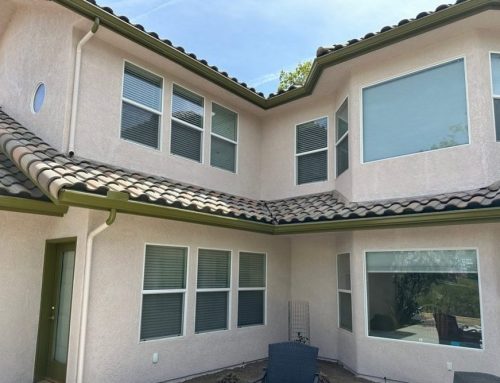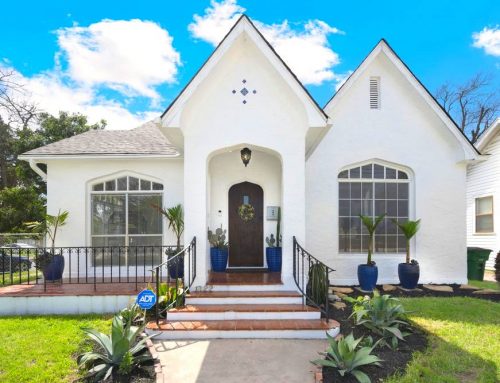When you hear the words “heat reflective paint,” do you still think of a stark white, thick, and rubbery roof and wall coating? You’re not alone. Recent technological advances have, thankfully, allowed the world of reflective paints and coatings to move past this cumbersome image and toward more fashion-forward, energy-efficient coatings. As home improvement experts, it’s our job to educate homeowners on the options available – and their potential drawbacks.
Why Use Heat Reflective Exterior Paint?
If you are a homeowner looking for a way to go green and make your home eco-friendly or just cut your energy bills, heat reflective paint can make a big difference. Heat reflective coatings and paints reflect the sun’s rays back into the atmosphere. This leads to lower house exterior temperatures and less heat gain by the building, which means cooler interior temperatures as well. The cooler the interior of the house, the less need for fan and air conditioner use, which means less energy consumption by your household.
Exterior Colors Beyond White Paint
If you are a homeowner keen on the idea of energy savings but don’t like the thought of having a bright, reflective, white house color, there are options. If you are trying to match the perfect shade of heat reflective paint to match your home’s roof, stonework, or landscaping, TEX•COTE® products are available in a multitude of beautiful colors, from Cape Cod Blue to Whisper Gray. With TEX•COTE® COOLWALL®, all colors are “green.” You can forget about fading and heat build-up, even using medium and darker colors.
While selecting the color of your heat reflective wall paint, be sure to take into account the color of your roof. If your roof is relatively new, you probably won’t be changing it anytime soon. So while choosing the sides of your home, make sure the color or colors you select work well with the existing roof color.
One of the popular trends today is the soft contrast between trim and house colors. Many homeowners decide to go for a contrasting exterior because, when used correctly, these soft contrasts can make the house appear much larger than it actually is.
It is also wise to look at the neighbors’ homes. While we all want to express our individuality, it is better not to clash with the neighborhood because there is a danger of the house becoming an eye sore rather than eye candy.
Sometimes landscaping is the last aspect that is being addressed in a home renovation, but if you already have a great deal of landscaping around your home, it is important to coordinate your house color with the existing landscaping. It would be a waste to have to replace shrubbery, flowers, and trees just to make their colors compatible with your new house color.
Two colors are normally used on single-story homes and three colors on two stories. If you own a Victorian-style home, it will probably handle more than two colors.
If brick, stucco, or other wall treatments are part of your home’s exterior, be sure to coordinate the house color with them.
You can add incredible color and “life” to a home simply by selecting contrasting colors for the trim. Don’t worry about dark colors with COOLWALL®: Its special reflective formulation resists fading and stays cooler – even on the hottest days.
Heat Reflective Coatings are a Cutting Edge Home Improvement Technology
As a professional exterior painting company, we stay on top of new advances in painting technology so we can educate our clients when they ask what options are available. When it comes to heat-reflective paint, our clients are able to choose from a plethora of beautiful designer colors. With the long-lasting TEX•COTE® COOLWALL® performance, the world of exterior paint is wide open to cutting energy consumption, and you don’t have to sacrifice appearance for eco-friendliness or economy. If you’re ready to make a smart investment in your home with heat-resistant exterior wall paint, give California Energy Contractors a call at (855) 779-1413 or click here for a FREE estimate!










